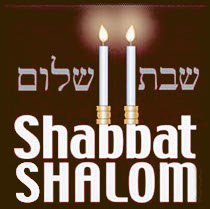Haftorah Vayakhel
This week, unlike many years, we will only be reading Parshat Vayakhel, in fact, two different sets of Haftorot will be read across the world, Sephardim and Chabad Chassidim will be reading from Kings 1 7:13-26, whereas Ashkenazim will read from Kings 1 7:40-50.
Both sets of Haftorot concentrate on the building of the First Beit Hamikdash. The Haftorah starts out relating how King Solomon brought a man of the name Chiram from Tyre, a man described in the Haftorah as 'coppersmith with insight and with knowledge to perform all manner of work with copper (Kings 1 7:14). In fact the merit of helping in assisting the construction of this most holiest of buildings was so great, we actually see, Chiram gets rewarded with a very long life, outliving over twenty Generations! According to one of the sages, he went up to Gan Eden alive (Mesechet Derech Eretz Zuta).
Both the Tabernacle and the Beit Hamikdash was constructed by the two tribes of Yehudah and Dan, the spiritually strongest and weakest tribes, respectively. This was done deliberately to show unity, within the Jewish nation. In fact the main purpose of the Temple was to bring unity amongst all people to serve G-d. The entire Jewish nation had obligations, for example to bring their First Fruits crop on a yearly basis to the Temple - this was from the seven species the land of Israel was praised for. G-d wants all people to work and live peacefully with each other while at the same time wanting us to recognize that everything is from G-d.
The Haftorah relates the splendor of the Beit Hamikdash; it was so dear to G-d and the Jewish nation that many verses in both the Parshah and the Haftorah describe the exact measurements of the various utensils and the main infrastructure of the Temple. Nowadays, in any community we may live in, just as well as it is vital to use the Synagogue, for prayer and other activities, it is also essential for it to contain a beautiful inner setting, showing G-d how much of a beautiful place it is that people come together to pray in a minyan (quorum of ten people) and how beautiful for example the Sefer Torah and all the other essential components of the Synagogue are.
The Haftorah describes the large doorway of the Temple, the columns were eighteen cubits high and were topped by two capitals which were intricately carved with pomegranates and palm leaves. Once again we see hinted the seven fruits of Israel, one of them being the pomegranate and the festival of Succot since it describes the palm tree, in fact the festival of Succot saw vast activity in the Beit Hamikdash.
Chiram also built a copper basin (washbasin) as it's described in the Haftorah "It stood on twelve oxen, three looking toward the north, and three facing the west, and three facing the south, and three facing the east; and the sea (was set) upon them above, and all their hinder parts (were) inward (Kings 1 7:25)." In this basin (a large mikvah), the Kohanim (priests) would immerse before they served in the Beit Hamikdash. Most of the sacrifices and work that took place in the Beit Hamikdash was from the Kohanim.
Going along the lines of the theme of Unity, we see that there were 'twelve oxen,' In fact the number twelve very much symbolizes how we should all be united in are different characteristics and serve G-d using the unique attributes which each and everyone of us personally have, however to do it in a unified manner. The twelve tribes all had different symbols and colors on their flag and were described with different excellent attributes, however despite having different gifted abilities, they were all ultimately able to use there differing characteristics in order to serve G-d, we too should look at our different strengths in any team we may be in, whether in our married lives or at school, the workplace or with our siblings and use our glowing characteristics to work well together and bring down the divine presence in our respective place.
This Dvar Torah is dedicated to Yael Leah Bat Maragalit to have an easy and safe childbirth and very quick and healthy recovery, Shabbat Shalom.

 Share on Twitter
Share on Twitter Visit our Facebook page
Visit our Facebook page